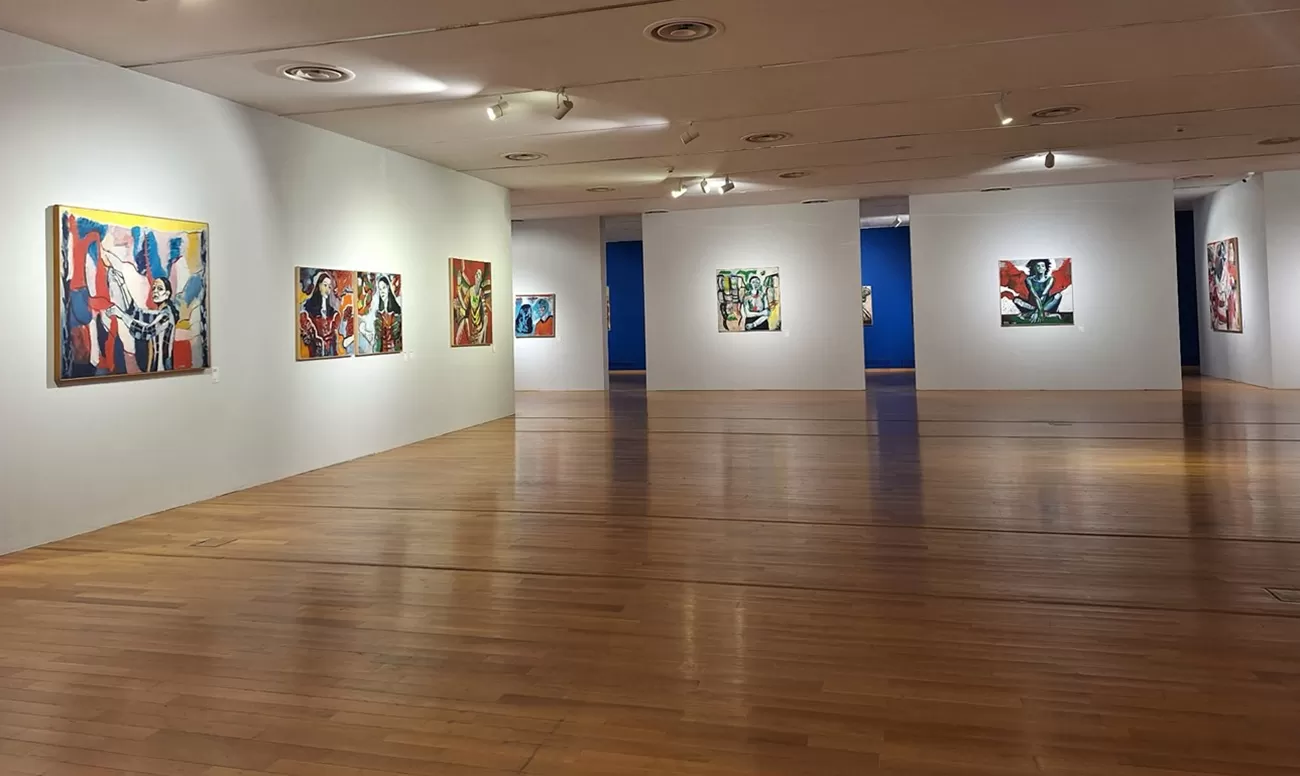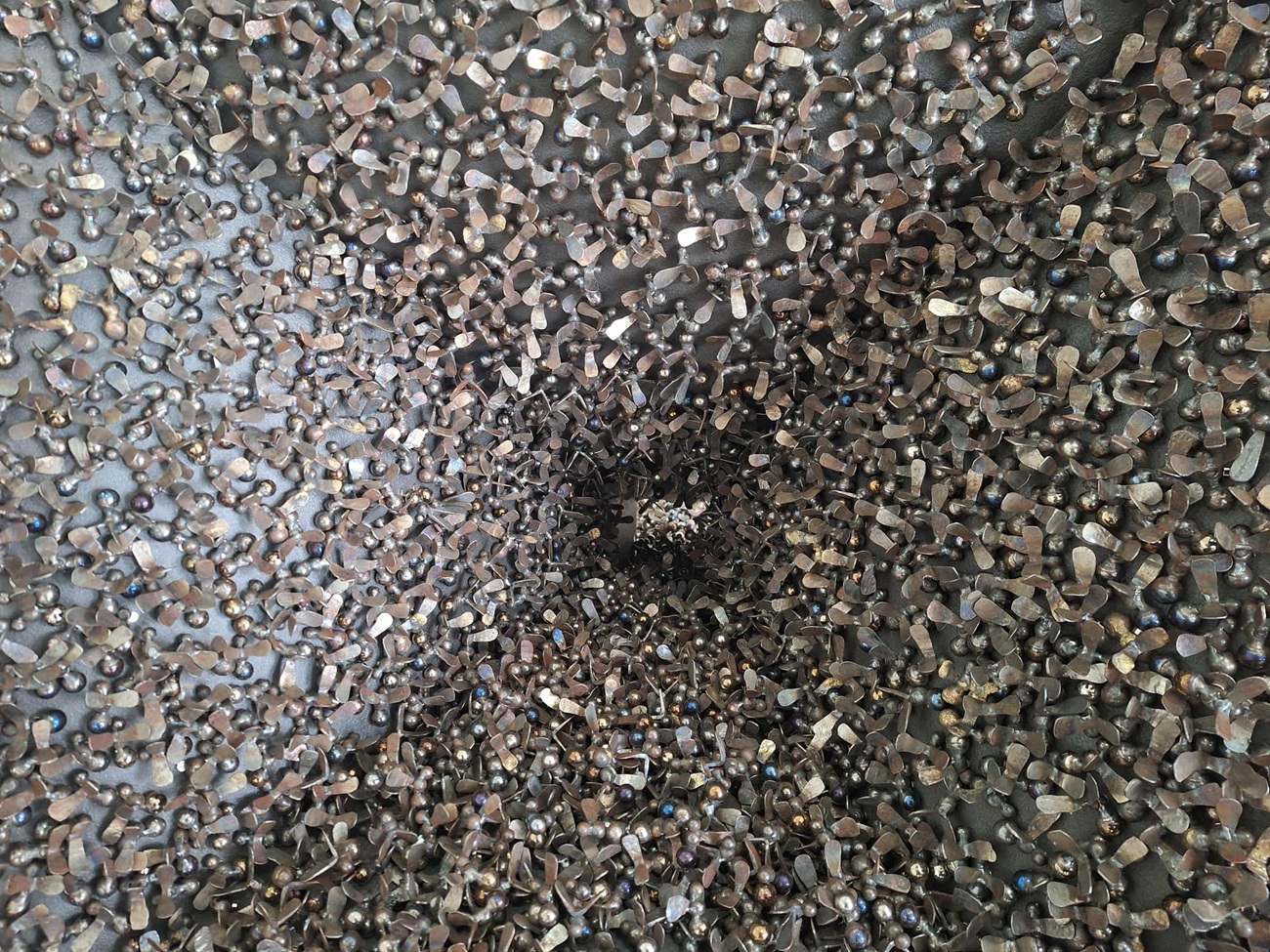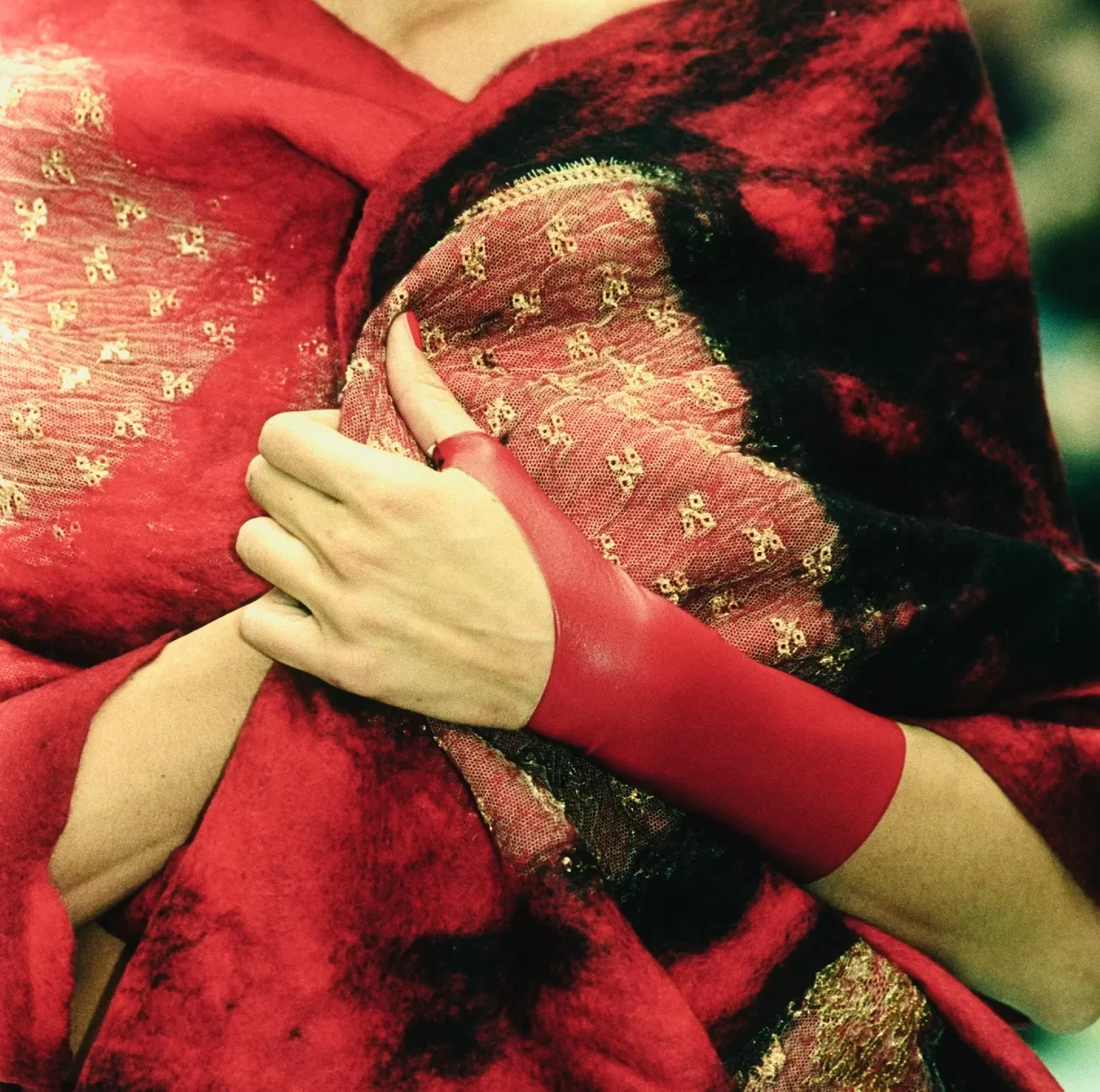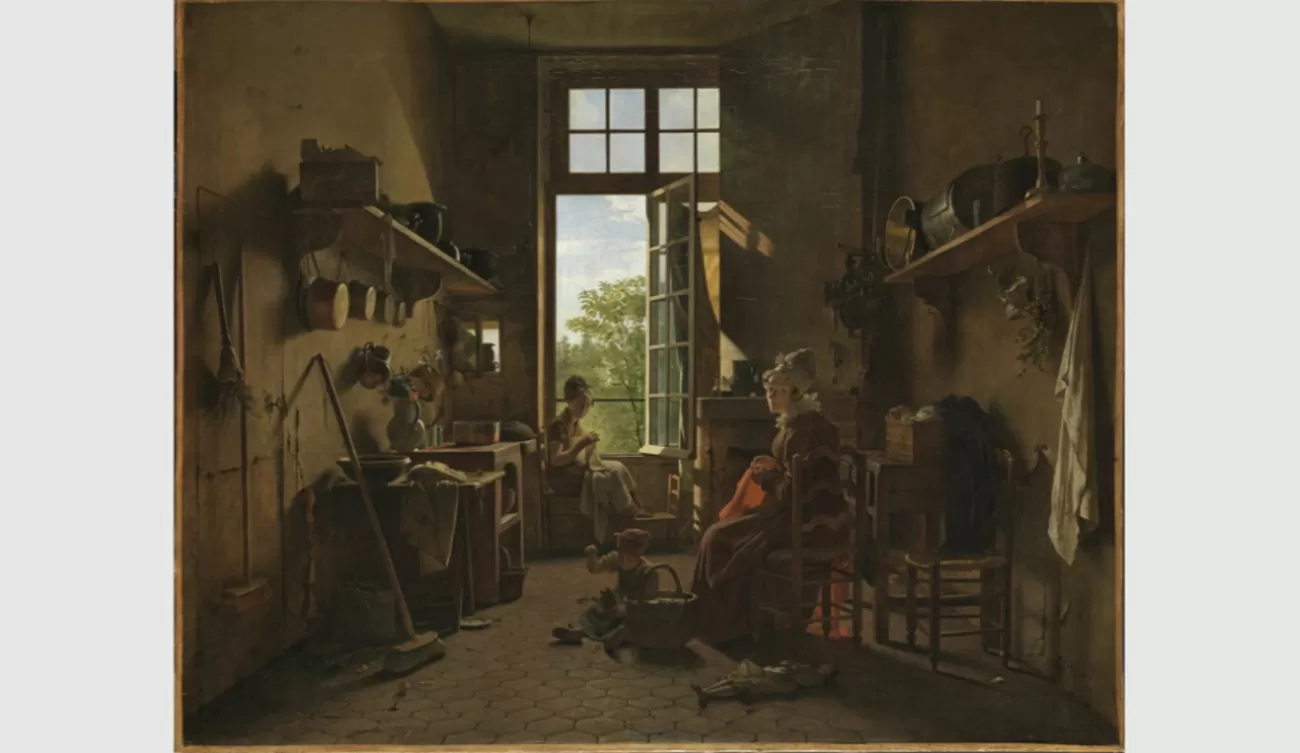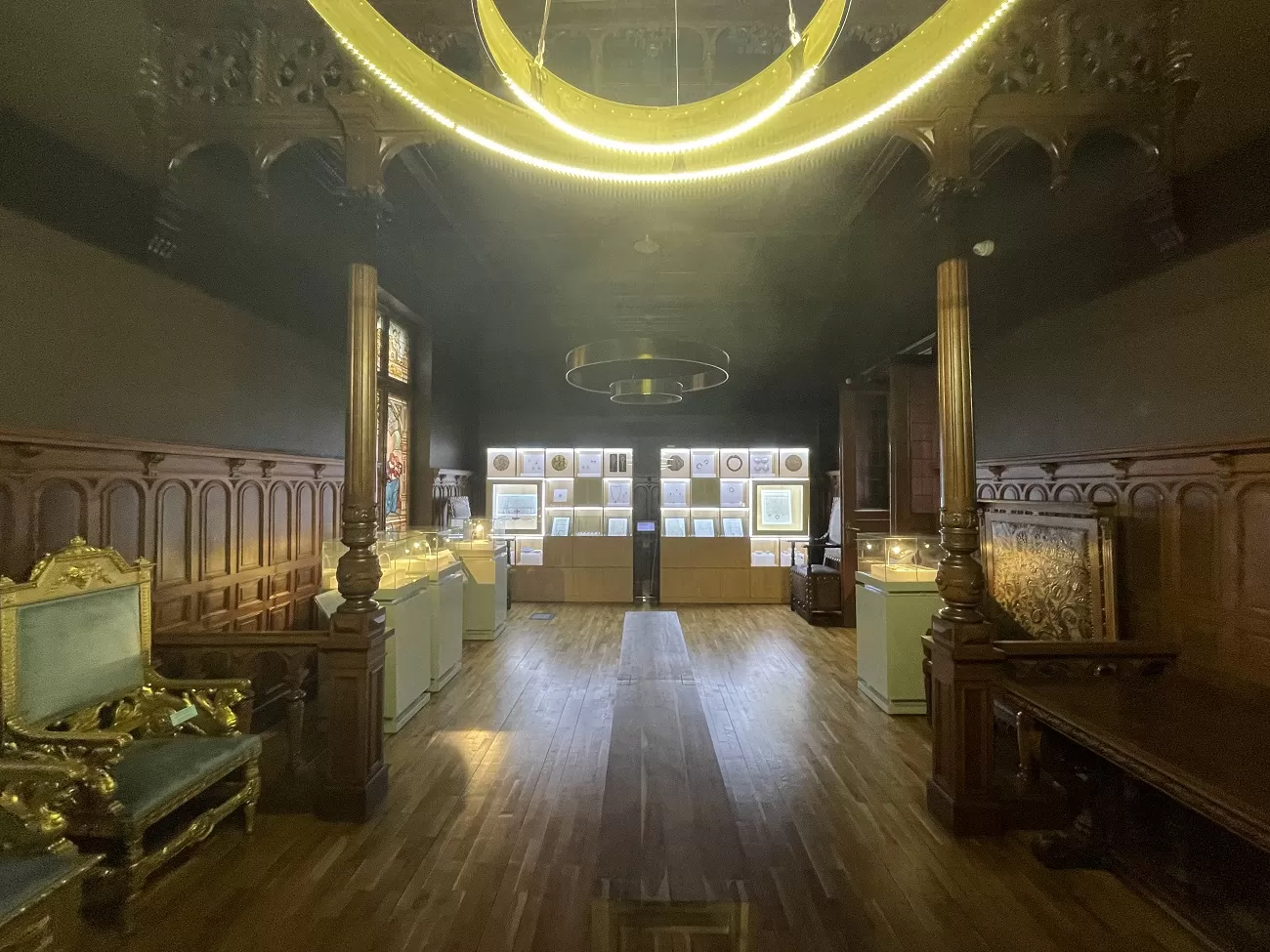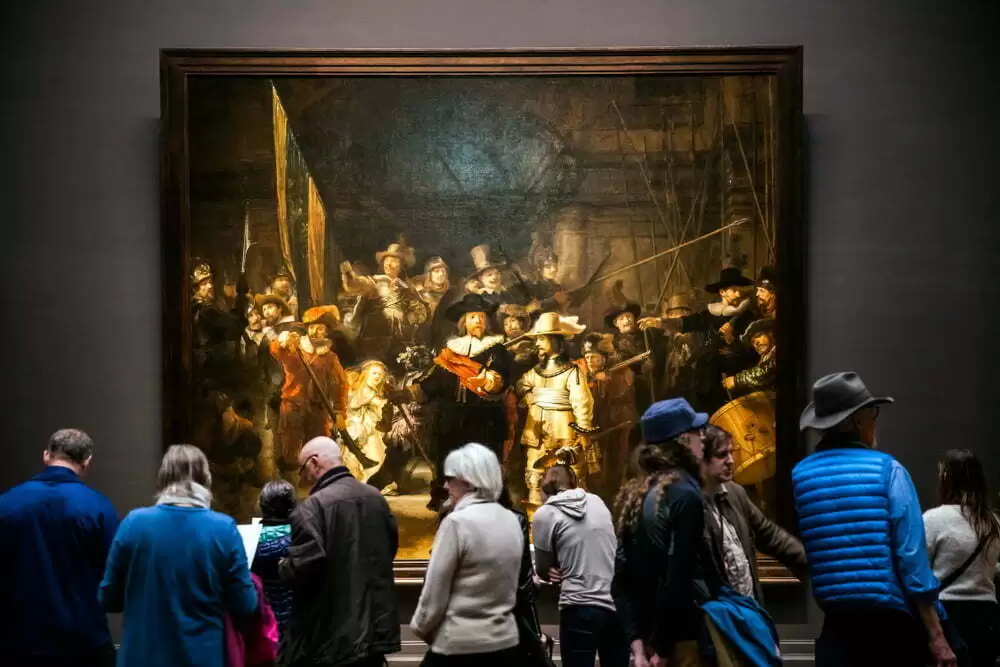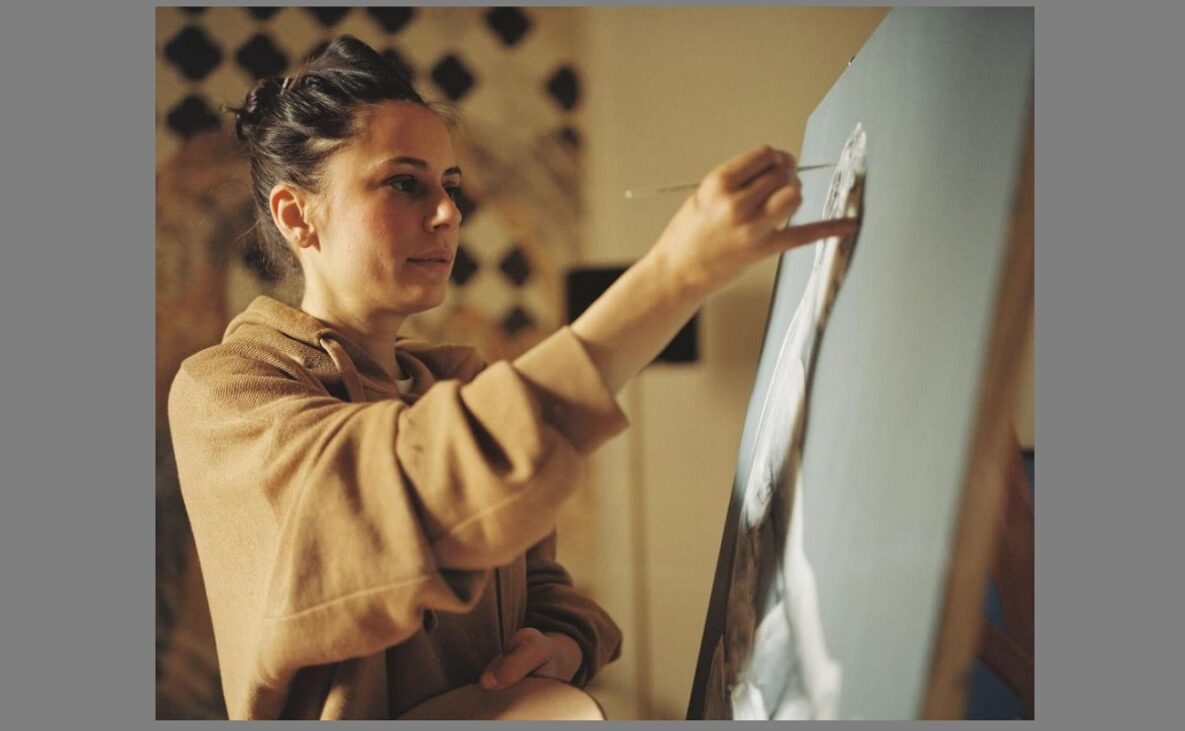
INTERVIEW – Monica Ioniță, on art from waste and sustainability without greenwashing
Monica Ioniță, designer and artist, talks in an interview with curatorial.ro about her projects of creative reuse of materials, waste, the need for sustainable products, the boycott of big brands that use “eco campaigns” to pollute more and more and about the exhibition she will open on September 5 in Bucharest. An activist for the environment and passionate about traditions, she says that craftsmanship doesn’t have to be cheap – “it comes with many advantages, such as product quality, the uniqueness of each piece, environmental responsibility” – and that to combat the fast fashion industry and cheap furniture manufacturers who run greenwashing campaigns, we need to ask the right questions and act accordingly. “In a more consumer-driven society, people can see for themselves that making sustainable choices is not just a fad, a trend, but a necessity.” In Bucharest, in her showroom at 14A Paris Street, the artist – founder of the “Old as New” project – will present the exhibition “Echoes and Lights“, the first complete collection of decorative objects – paintings, lamps and vases – created exclusively from recycled materials. The exhibition will run until September 19.
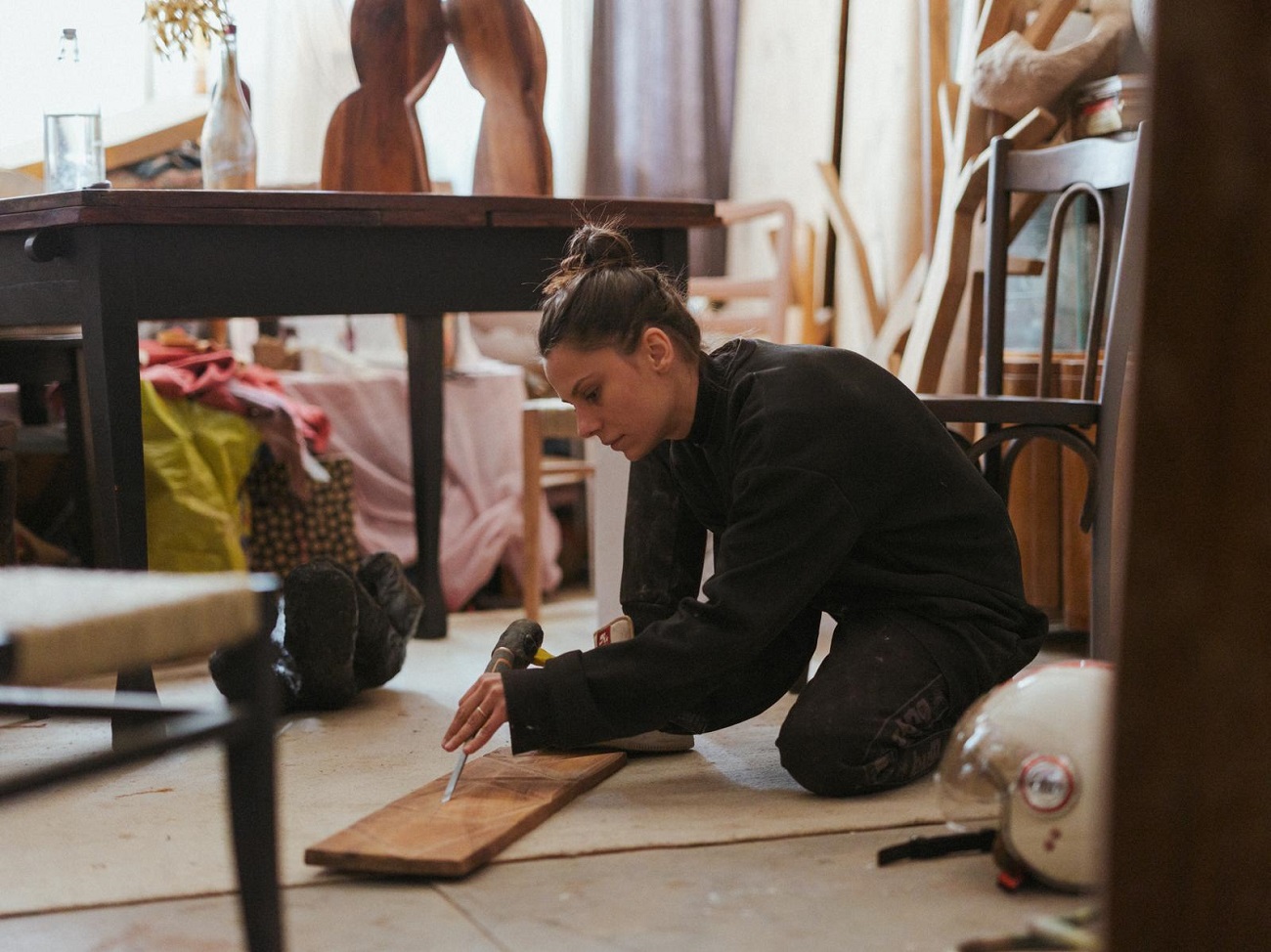
Monica Ioniță
How did you come to combine nature and traditions in sustainable creations?
Monica Ionita: I was raised that way. I grew up in the countryside, where you rarely saw a plastic wrapper or a new thing. When your grandmother would give you a gift, it was probably an ilic or some socks that she had made, and that for me was an example that she set frequently, which I still appreciate. From when I was a child I liked to paint and write, I used to express myself more correctly that way. When I was older, I went into Journalism, then got a job because I couldn’t afford to finish school otherwise, and eventually I finished Agriculture at U.S.A.M.V, which is why I felt like an impostor in my art. To stop this feeling, that I was ruining the canvases I was drawing on and that I was only polluting more with my eco-themed paintings, I started making art out of waste, and the feeling of guilt turned into peace of mind. And so “Old as New” was born.
Where do you get the raw materials and how long does it take to make an object?
Monica Ionita: Now I have my own suppliers of cardboard and paper, before I used to collect these kinds of materials on the way to the workshop. The best material I get is from Upgrade100, who send me the paper, cut into small pieces, which makes my production process easier. The expanded polyethylene that I use for the bases of some of my parts is still found on the streets, people still throw their rubbish on the side of the road. In a kilometer from home to the workshop I can find enough “squeaky” packaging that I can’t carry it alone. I find wood most of the time at the dump, when I take the trash out, or get donations. All sorts of people write to me who know the importance of wood and want to give it a new life. Each piece, depending on its complexity, takes a different amount of time to complete. I’ve been working on a chair for over a year, which is made from recycled cardboard, but I’m convinced that after all this experience I will be able to make another chair much faster. I wish I could give some concrete examples, like a 20 cm lamp takes 3 days in summer and about 7 days in winter to be ready, and a papier mâché bench took about a month to be ready for the exhibition, because we had a dry spell and we could dry them in the sun. A wood carving can take anywhere from a day to months, depending on the complexity of the work.
Which of your projects was the most difficult to realize?
Monica Ionita: The most complex and complicated project is VechiCaNou.ro. I’ve always had entrepreneurial initiatives, but this concept came into my life when I realized what I need to feel fulfilled, which is to make art and to be able to help the planet. I started this workshop and I want to take this concept to the factory level, I want to be able to recycle as much as possible. And if I would answer the question on a micro level, the most complicated and difficult piece I made was the “Ecou Ancenstral”, which is a traditional Romanian mask made from over 2,000 pieces of leather thrown away by a shoemaker. After dozens of hours of scissor-cutting every bit of hide, the wounds were slowly turning into calluses and nerve discharges in my fingers, and from that point I could only continue because I was burning with impatience to make sense of sacrificing those animals for their hides and not having any of them end up in the trash. And in the end, when I started to write her story, all the words were immediately flowing and nothing was complicated.
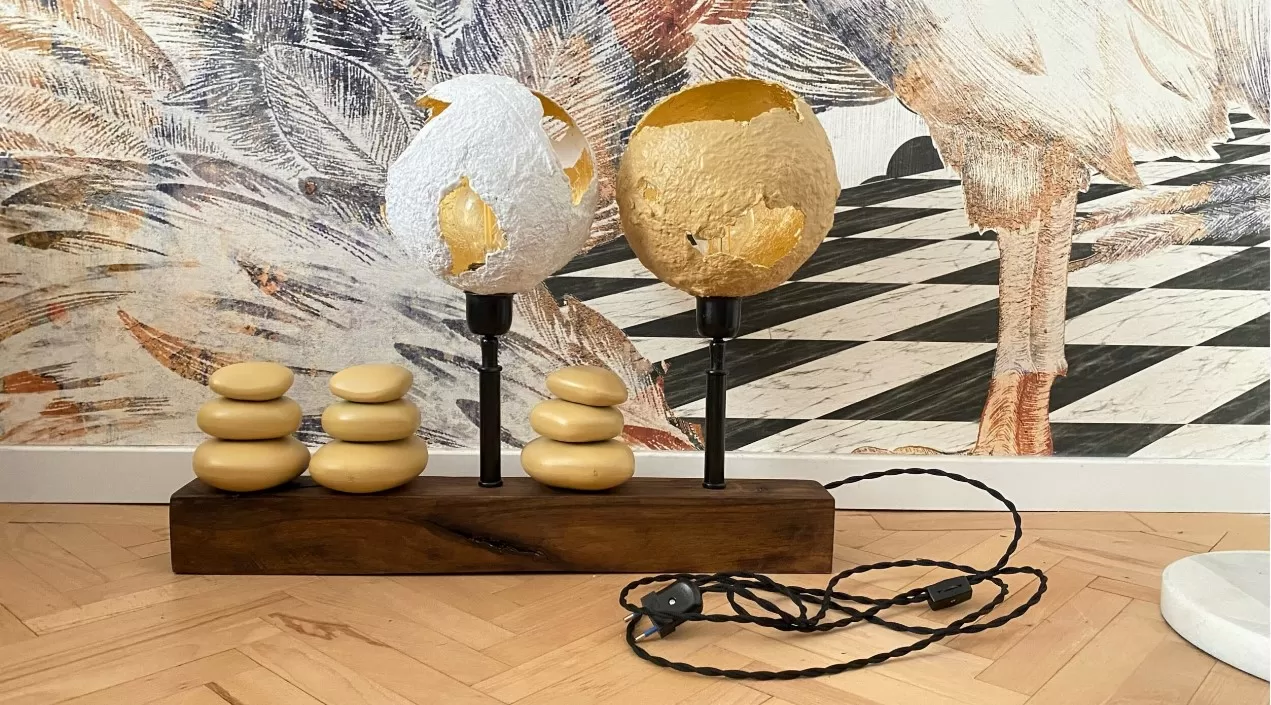
Royal Garden floor lamp by Monica Ionita
What in your home doesn’t fit to this recycling principle and what is the most cherished item you own that you’ve created yourself?
Monica Ionita: Clearly, appliances are the ones that don’t fit into this recycling principle. I prefer to replace them with new models that have low energy consumption and modern features that simplify my life, while the old ones I send for recycling to specialists. I also have a few second-hand appliances, but only because they fit the consumption standard. For the rest, we’ve pretty much managed to make the house talk about us through all sorts of reinterpreted or refurbished pieces. It’s hard for me to pick just one object when I’m answering these questions surrounded by pieces that tell our story, so I’ll quickly name a few and briefly describe them: the kitchen mantel, which is made from my boyfriend’s mom’s closet; the wardrobe I found in the apartment and adapted to fit the fridge perfectly; the perforated mantel in the living room, which I worked on for a few days for its color and texture. I’ll stick to them so as not to bore you.
What’s your guiding principle for living as eco-friendly as possible?
Monica Ionita: The principle that guides me on this sustainable journey is to ask myself questions, the more the better. I remember when I was younger and I was learning about fungi and soil bacteria that degrade almost everything, I had this question while walking in the stores: “If I put it in the ground, how long does it take for nature to decompose it?” That’s the thought I have when I buy something. I imagine it sounds bizarre, but for me it was easiest to understand as a child what the impact of certain substances on the environment means, and to that question, unless Google tells you it will degrade fast enough, don’t buy unless absolutely necessary. When this search engine appeared in our pocketbooks, it was my best advisor in having a sustainable existence, I just had to ask the right questions. I don’t have a zero waste life, I live in the city, but at least I can always find out how I can reduce my environmental impact as much as possible and I am more and more always able to go beyond my condition and be a little bit more careful in my choices, and that makes me so happy, sometimes I can’t wait to learn something more and apply it.
We talk more and more about sustainability and recycling, but the world is increasingly polluted and people seem just as careless. Many projects and initiatives have sprung up, and on the other hand the big fashion and design manufacturers are also among the biggest polluters of the planet, although many – reluctantly – are trying an eco-friendly approach. How do you see this whole scene? How has it evolved over the last two decades since you’ve been an activist?
Monica Ionita: I would first answer that question with a sigh. There is only one way to stop the nefarious fast fashion or cheap Swedish furniture industries, and that is to stop buying from them. Their green campaigns are designed to pull our eyes out of our heads and let them litter us. It’s because of them, who have huge media budgets, that people rest assured that nothing bad can happen. We are living in the year when the biggest polluter, Coca-Cola, who packaged our rivers and sold them to us, takes the award for best environmental campaign, that’s pretty much the evolution. To stop these greenwashing shenanigans from happening, we need to ask the right questions, answer them and act accordingly. Sustainable in design I think means local, artisanal, second hand, recycled materials, in no way a corporation that consumes and pollutes enormously with 99% of their products and also creates 1% “sustainable” products that they use 100% in their advertising campaigns to look like they care. This is what we have evolved into, hence the oceans with islands of dozens of kilometers of plastic, fields and forests full of garbage.
Do you think that what is being sold today – at the level of the big brands – as sustainable is really sustainable? And does it make a difference or is it just an alignment of these entities with the globally discussed theme?
Monica Ionita: The big brands I think are not interested in sustainability, they only have to simulate it in campaigns, but in no way to make a decision that matters for the planet. Do you know what that would mean for them? Well, being sustainable is not just about carefully chosen and natural materials, which are expensive, but also about quality and durability, and that would affect them financially. This principle would also have to be based on paying for the daily subsistence of the workers who produce those parts, and that would cost a lot again, or they prefer the labor of adults or children who sacrifice their lives for a piece of bread. If their expensive campaigns weren’t fake and bearing fruit, the planet wouldn’t now be buried in garbage. There are clothing brands that have campaigns to collect clothes even though they don’t recycle them, they rely on the fact that we have nowhere to take our used stuff so they create a flow in their stores, plus they can use that as part of their sustainable behavior, and then they give themselves a prize.
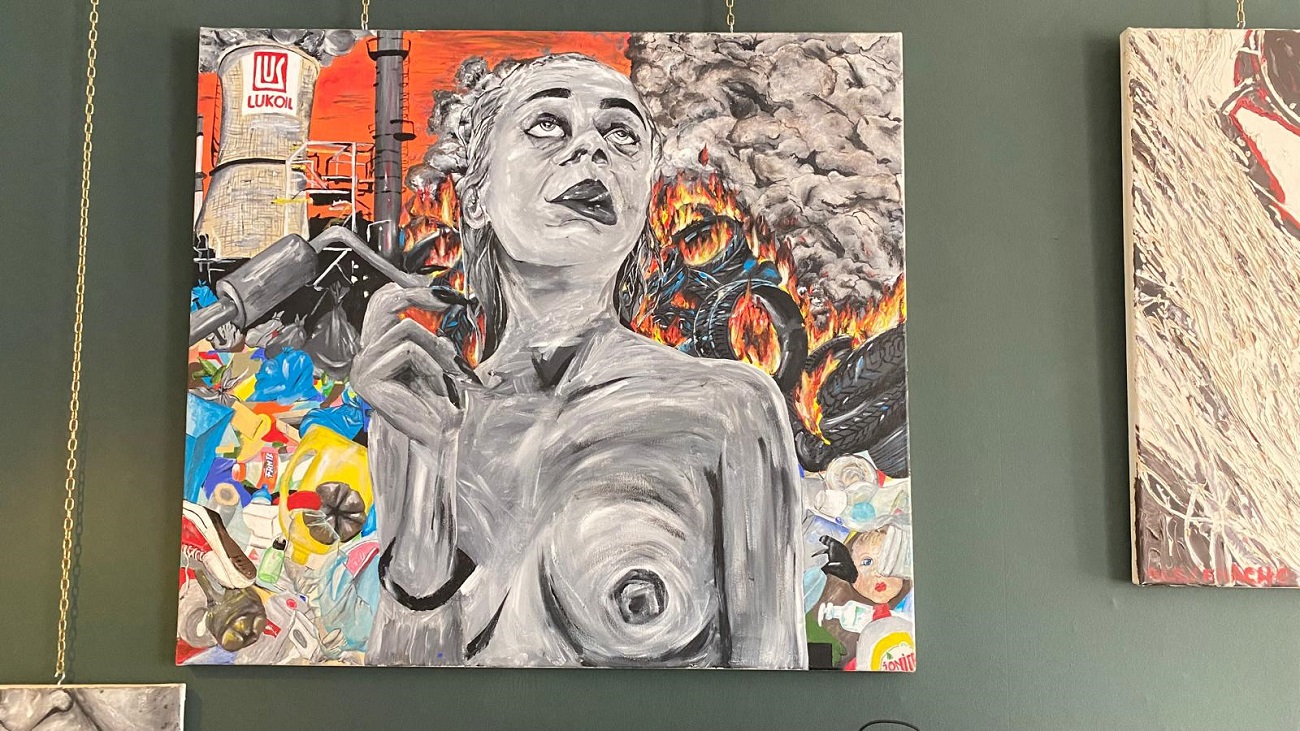
Objects by Monica Ionita
In an increasingly consumer-oriented world, can people still be persuaded to refurbish or transform their clothes, and furniture?
Monica Ionita: Those who don’t already have this pleasure don’t have it because they haven’t tried it before. I don’t think there is greater satisfaction than making something with your own hands, nothing has brought me more peace than that and I think it’s in our genes. Imagine that object in your home, no longer adapted to the current design, already has a story with it, maybe you have it from your parents or grandparents, and you choose to refurbish or reinterpret it to keep it in your home. That object can become a conversation starter when you receive visitors, it will talk about you, your family or its adventure until it came to you. Even buying old clothes or objects that are second-hand has become popular. In vintage shops you can find gorgeous pieces that you’ll rarely see on other people, and that makes me very excited, with fast fashion dictating the poor quality uniforms that have filled our landfills. In a more consumer-driven society, people can see for themselves that making sustainable choices is not just a fad, a trend, but a necessity.
If we are talking about a world that consumes excessively, we are also talking about a world that doesn’t seem to have time for much. Why invest time and money in such things?
Monica Ionita: It’s simple to do a “time is money” calculation, and then you realize that you’re paying for those items out of your time spent at work. Simplifying it like that and understanding this idea, it only remains to weigh the pros and cons of such a decision. When you decide to save a piece of your home, you become a hero, a savior, and this satisfaction can only be found through your own work. After this feeling of fulfillment, there is the satisfaction of the man who has worked with his own hands to make something, the satisfaction of the creator, I would say. Not to mention the fact that you will be able to choose exactly the shade and design you want to achieve, which will fit your home perfectly and you will no longer have a house just like all your friends. And clearly it’s the piece that will speak about you when you have guests over. I call such items conversation starters. All these advantages of refurbishing will make the few advantages that a Swedish furniture store can offer you pale in comparison. I believe that if we want to stop our forests from being illegally stolen, we have to stop buying the kind of furniture that has become the norm in our homes. A testimony to the fact that we haven’t asked ourselves enough questions, such as, “Where does this furniture store get its wood?”
Are sustainable art and sustainable design “accessible enough” for people?
Monica Ionita: Art and design in the sustainability sphere is sometimes accessible if you have the patience to look hard enough. When I created VechiCaNou.ro I also did it to make art more accessible to people. My ultimate goal with this project is to scale as much as possible, to recycle as much waste as possible and to be able to keep the price as low as possible. Craft certainly doesn’t have to be cheap, it comes with many advantages such as the quality of the product, the uniqueness of each piece, environmental responsibility, but I want to make it more accessible to people to spread the story.
What do you want to convey through “Echoes and Lights”? Please tell us more about the works included in the exhibition.
Monica Ioniță: “Echoes and Lights” is the first complete collection of decorative objects created exclusively from recycled materials by me. The first one with the most affordable prices, which I hope as many people as possible will get to know it, as each piece will come to her home with its own unique story that will further sensitize. The echoes are represented by papier mâché vases, which speak most poignantly about the values that matter in the fight against pollution. For example, the piece called “Echo of Light” is a true manifesto of activism, a beacon of inspiration for sustainable living. In recent years, environmental degradation has reached alarming levels. Climate change, deforestation and massive pollution threaten biodiversity and the health of our planet. “Echo of Time” invites us to reflect on the impact of our actions on the environment. The metaphor of the vase suggests that just as layers of papier mâché are constructed with care and patience, so should we construct our daily choices in a sustainable way. The lights are versatile lamps that can be placed on the floor as well as on furniture and whose light is projected differently depending on the angle of refraction. They appear in this collection in unique shapes, with different textures and Romanian names that end up forming a special story that I want to inspire sustainable change. Names such as “izvor”, “văpaie”, “meandre” describe the lamps in this collection, and they become an example of how art and sustainability can coexist, offering aesthetic solutions that respect and protect the planet.
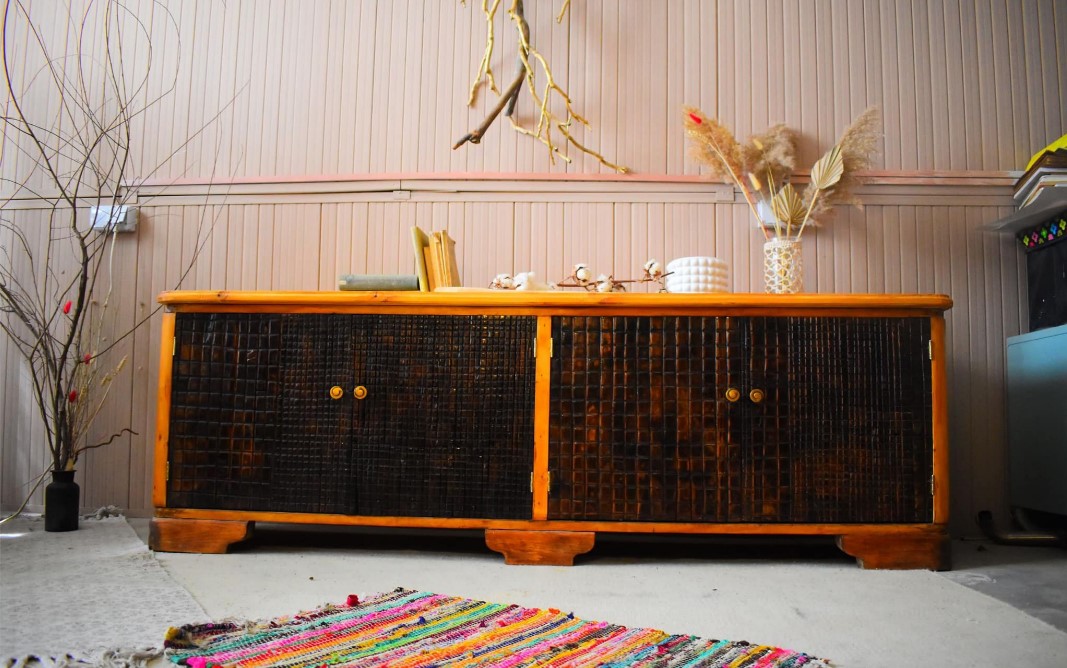
The chocolate chest of drawers by Monica Ionita
What are you currently working on and what are your plans for the near future?
Monica Ioniță: I am currently working on the event that will take place on September 5 at the Paris 14A showroom. I want the launch of the “Echoes and Lights” collection to be a vernissage in itself, which is why I’m working on pieces that have never seen the spotlight or the camera. I have managed to crown the ‘Lights from Nature’ collection with a unique, one-of-a-kind, non-replicable wall installation bearing its name. All these unique pieces will be surrounded by music and ambient sounds from my childhood, perfectly harmonized by DJ Gruia. I have been working for several months on a piece that in my imagination represents “The Throne of Civilization”, which will be present in this opening and represents the need to make changes in our lifestyle. I have created a set of six white paintings made of recycled paper, which speak of my childhood in the countryside and my longing for the time that seemed to pass more gently in my grandparents’ backyard. One of them depicts Grandma’s longing dry heart after our departure for the city, another is a tomato next to three slices of cheese, which speak of the first fruit of the early summer garden. I have a few weeks to go before this event and I’m sure I’ll have just as many weeks of continuous work to do things as well as I can. I would like at this opening to be able to get the message of sustainable living out to as many people as possible and actually show how easy it is to do so.
Photo credit: vechicanou.ro/ courtesy of the artist





